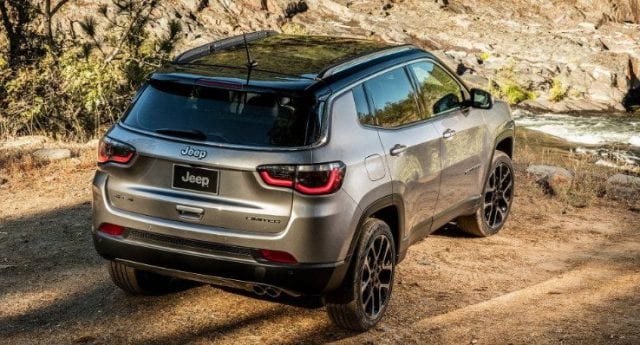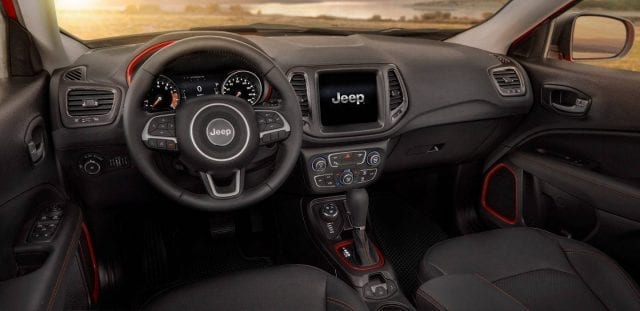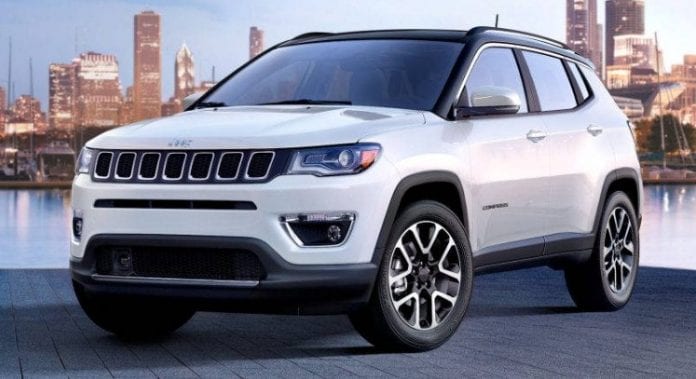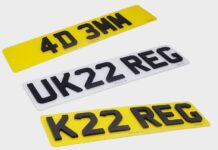This is second-generation Jeep Compass, and it is a huge deal because the first generation was not so successful. The new version of this vehicle will replace the terrible model but it will also come instead of the poor Patriot, and it will join the Renegade and Cherokee.
Compared to the previous variant, the Compass could be considered brand-new, but its platform will remain the same. It will be based on the longer version of the small-wide 4×4 chassis that also underpins the Jeep Renegade, while it will be powered by the 2.4-liter Multiair four-cylinder and identical transmission options like before. The new version is slotted directly between the Renegade and the larger Cherokee and it is offered in Sport, Latitude, Limited and Trailhawk trims.

Exterior and Interior Design
The Compass is a handsome vehicle with a seven-slot front grille which makes the Jeep brand distinctive and plastic wheel arches and lower body cladding give this car a rugged nature. Furthermore, there is the chrome trim around the windows and painted door handles while the Trailhawk is particularly handsome because of the specifically designed front bumper.
The vehicle that was tested is the 2017 Jeep Compass Latitude that featured a leather and cloth seats and a fancy steering wheel wrapped in leather. In addition, you can find the all-weather floor mats and a large 8.4-inch Uconnect infotainment system. Also available in this one are the 5.0 and 7.0 Uconnect systems and generally speaking, there are some nice materials in the cabin, but perhaps too much plastic. The driver can access all the controls easily except the HVAC controls which are placed lower on the dashboard and are pointed downward. The steering wheel features a lot of familiar buttons, the gauge cluster is pretty innovative, while the full-color TFT display shows plenty of useful information.
The Compass comes with the 4WD system which is optional on all but the Limited and Trailhawk models, and you can control it electronically by a knob located on the console. All you need to do is select a proper terrain setting, and the computer will take over. There are Auto, Sand, Snow, Mud and Rock driving modes and with a 4WD Lock button, the front and rear axles are in a 50/50 torque split. On the Trailhawk, you can also find downhill descent control buttons and 4WD Low Range.
Passengers in the back will have enough room to sit comfortably, and according to Jeep, there are 3.2 inches of additional legroom in the 2017 Jeep Compass than in the Renegade. When you fold the seats flat, you get 59.8 cubic feet of space.
How does it feel?

The interior of the new vehicle invites you to get inside, and once you are seated, you can feel the support for your back. There is enough room for you to feel relaxed, but finding the engine start button can be tricky as it is positioned on the side of the steering column with two pieces of hard plastic. When you start to accelerate, the Compass follows you smoothly, and low-speed driving is rather comfortable, but highway driving requires patience and exercise. The complete output of 180 hp and 175 lb-ft of torque is not enough to move this vehicle, without feeling sluggish.
If you thought that the 2017 Jeep Compass was heavy, you were wrong, because it weighs only 3,100 – 3,300 pounds, depending on trim. We would like to see this vehicle with 30 extra horsepower and lb-ft of torque as this would make it more fun to drive. However, this compact SUV is impressive in terms of fuel efficiency as it is rated at 22 mpg city and 30 mpg highway. Furthermore, the Compass goes over the bumps and imperfections with ease, and you will not feel a thing. The steering is nice but somehow numb, to be honest, that is not surprising for crossovers.
Conclusion
The 2017 version is a massive step forward, and the new model is much better than the two vehicles it replaced. It looks nice, the interior is comfortable and spacious, but hopefully, Jeep will do something about the powertrain in the future. At least it is going in the right direction.









